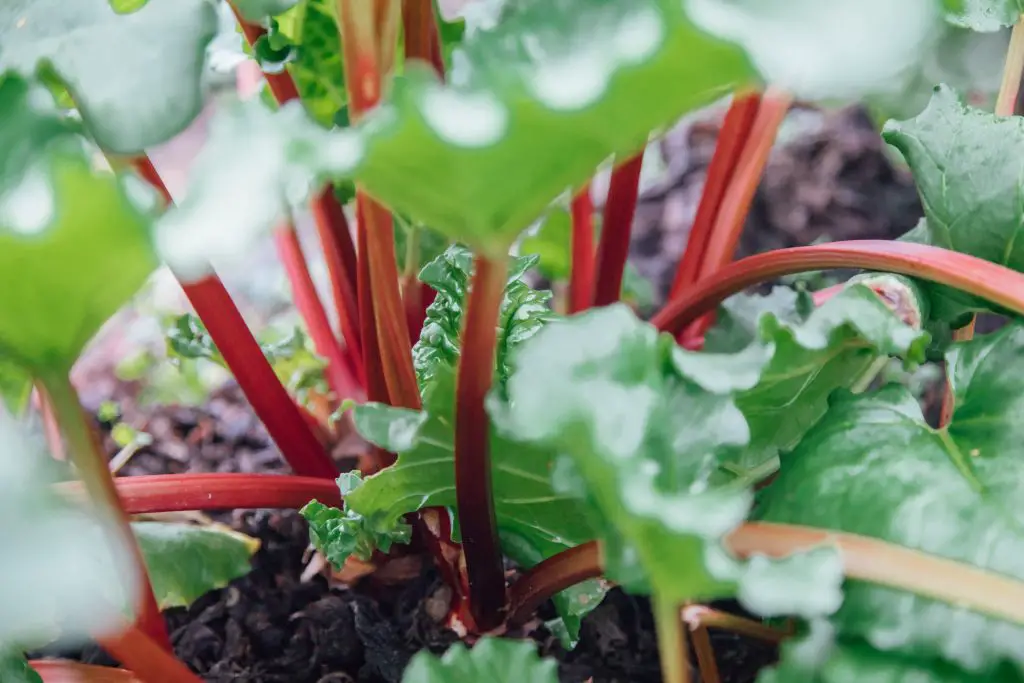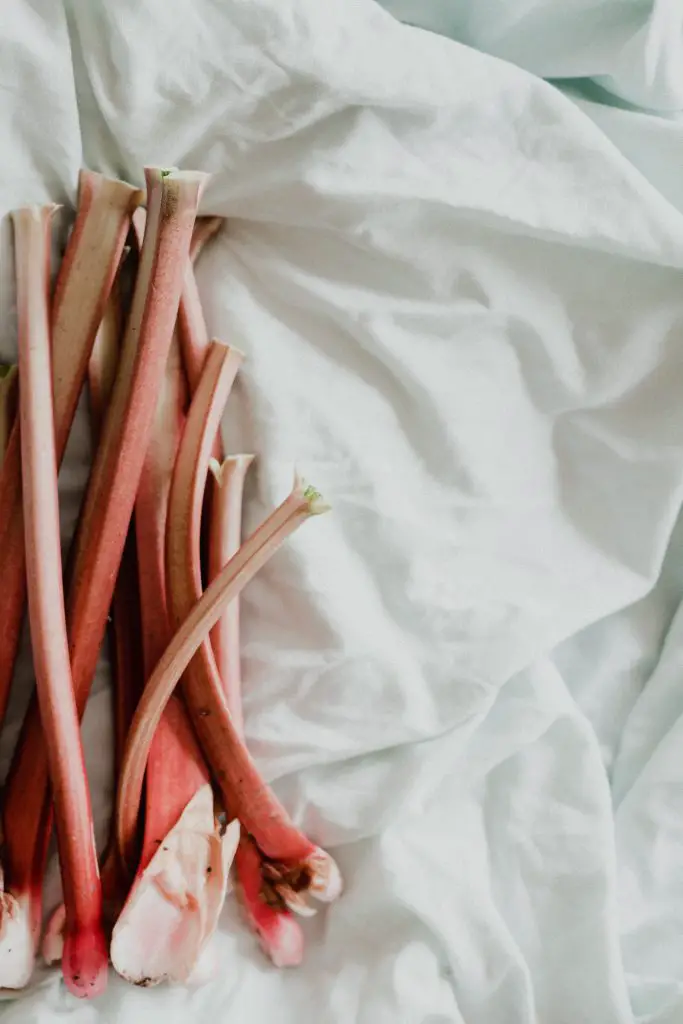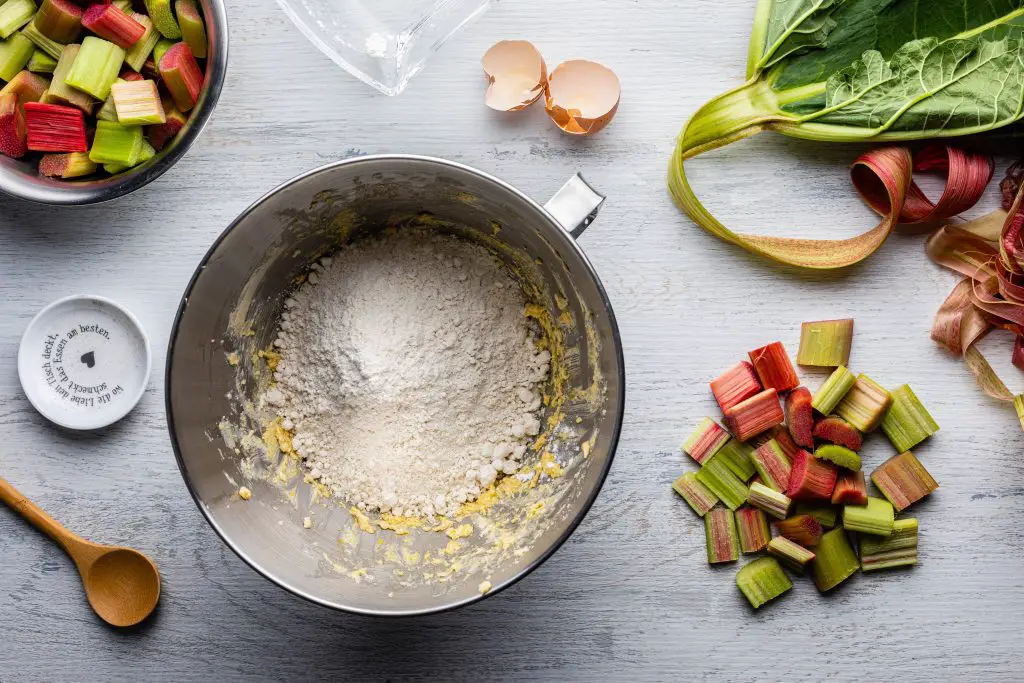How Much Does A Rhubarb Plant Yield Per Year? Rhubarb plants are one of the most popular perennial vegetables to grow in your vegetable garden home. However, if you have not grown a rhubarb plant before one of the questions you may be asking is how much does each rhubarb plant produce in a growing season and does it vary significantly from variety to variety?
Rhubarb plants typically produce around 5.5lbs (2.5kg) of storks per plant throughout the season according to a study carried out by the Slovak University of Agriculture over a 2 year period. However, the study shows that the yield is substantially affected by the weather conditions from year-to-year and the variety to some degree.
In the study, there were 5 varieties tested which were shown to vary a little bit depending upon the particular variety being grown. For your reference, I have included the average annual yield across the 2 years of the 5 varieties in the table below.
| Variety | Yield (kg/plant) | Yield (lbs/plant) |
| ‘Red Champagne’ | 3.93 | 8.67 |
| ‘Valentine’ | 2.91 | 6.41 |
| ‘Canadian Red’ | 2.63 | 5.80 |
| ‘Poncho’ | 2.556 | 5.63 |
| ‘Victoria’ | 2.489 | 5.49 |

What Is The Difference Between The Different Varieties Of Rhubarb?
Many people think of rhubarb is just a single plant however there is a range of varieties available which include both red and green stalk varieties. The varieties that were tested in this particular study were all red skin varieties with the exception of Victoria and Poncho which have green skin.
Aside from that visual difference you also observe differences in the colour of the flesh below the skin and also the shape of the stork themselves. Additionally, the growth habit of the plants also varies to some degree depending upon the particular variety. To see these differences we have provided the table below which provides a description and also a picture of the profile and colour of the flesh from each of the varieties tested.
| Variety | Description | Profile |
| ‘Red Champagne’ | An erect plant with red skin that is speckled and is some what hairy just below leaf blade. The stalk itself has green flesh and a small degree of ribbing. | |
| ‘Valentine’ | An erect plant with red skin and red flush. The storks have a medium degree of ribbing and do not have any hair on the stork at all. | |
| ‘Canadian Red’ | A semi-erect plant with red skin and green flesh. The variety has a small amount of hair on the surface of the stork appearing just below the leaf. The stork also has defined ribbing on the outside of the stork producing discernible lines down the outside of the stork. | |
| ‘Poncho’ | A semi-erect plant with green skin and flesh that does not have any significant ribbing on the surface of the stork. | |
| ‘Victoria’ | An erect plant that has green skin and green flash. The stork has small amounts of hair at the top just below the leaf blade. There is very little ribbing on the surface of the stork. |

How To Get The Most Out Of A Rhubarb Plant?
Rhubarb plants are extremely easy plants to grow and they can be neglected for long periods of time and still get a harvest. However, the plant is neglected over a period of several years you will see a decline in its yield over time. To avoid this there are a few things you can do to ensure that the plant remains productive on an ongoing basis.
The most common reason why rhubarb plants decline in performance is because the crowns get too large over several years and then begin to have dead spots in the centre of the crowns which no longer produce high-quality storks.
To avoid these issues it is advisable to periodically divide the rhubarb crowns every couple of years. This can be done by digging up the crown at the end of the season when the weather is beginning to cool down and then dividing it using a sharp spade or shovel.
When dividing the crown it is advisable to ensure that each piece of the crown contains a couple of buds on the surface. To ensure that this is the case it is important to ensure that the piece of crown is at least a couple of inches in diameter.
In addition to dividing the plant it is also advisable to take the opportunity to replenish the soil where the crown has been removed before replanting it. It is a good idea to add additional compost and organic matter to the area and dig it in thoroughly to ensure that the plant has plenty of nutrients available to it.

However, it is also a good idea to periodically feed the plant at the beginning of the growing season to encourage additional growth. Many gardeners use fertilisers for this, however, I find that is it just as effective to use compost as a mulch as it will progressively get worked into the soil over time improving quality.
In terms of the location of rhubarb plants they can tolerate shady conditions, however, they will perform much better in a sunny location as this will increase the rate of photosynthesis and therefore the rate of growth.
Additionally, you will find that rhubarb plants periodically produce flower heads late in the season. These flower heads will affect the yield of the plant temporarily because the plant will be going to concentrate on the production of seed rather than foliage. To avoid this situation remove the head by snapping it out from the Crown.
Lastly, to maximise yield it is advisable to pick the storks regularly when they’re available as this will provide additional light to the remaining stalks on the plants encouraging the production thereby increasing the yield.
I hope you found this article useful and have great success with your rhubarb. If you have any additional questions or comments please leave them in the section below.
Relevant Articles
Can You Grow Rhubarb From Stalks?
Is Swiss Chard And Rhubarb The Same Thing? How Do You Tell The Difference?
Does Rhubarb Spread? Is It Invasive?
